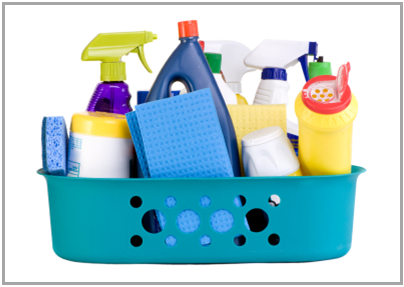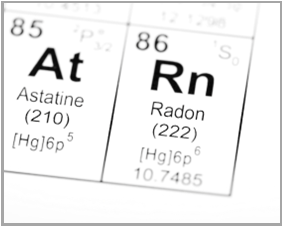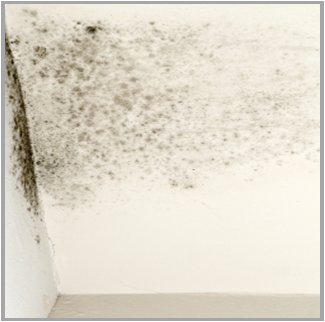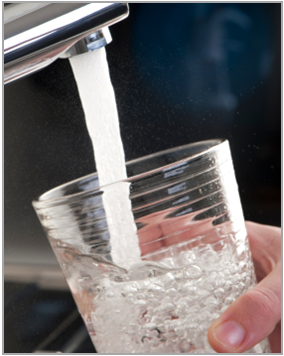
PrepareFirst assists clients regarding one of the most important safety threats ALL families face: the presence of toxic chemical and organic substances in our homes.
Here are some of the environmental issues we cover which, though unseen in many cases, can cause serious health problems:

Common Household Chemicals – The storage, use and disposal of chemicals around the home are issues which receive precious little attention in the average household. Yet, failing to follow prescribed guidelines can have serious health and safety implications. In fact, a typical home constitutes a mini-HAZMAT site. Chemical substances in the average home can be: 1) Toxic (poisonous to humans/animals), 2) Corrosive (destroy/dissolve materials, 3) Flammable (catch fire easily), or 4) Reactive (explode or generate toxic gas). A common but little known example of a reactive substance hazard would be interaction between household ammonia and chlorine bleach – a combination which can produce very dangerous vapor. Other examples of highly hazardous substances would include nail polish remover, toilet cleaners, oven cleaners, drain cleaners, contact cement (glue), pesticides, yard chemicals, motor oil, battery acid and, of course, unsecured medicines.

Radon – Radon is a naturally occurring gas that enters the home through cracks in the foundation floor and walls, drains, and other openings. Indoor radon exposure is estimated to be the second leading cause of lung cancer in the United States and is responsible for as many as 20,000 deaths annually. An estimated one out of every 15 homes in the United States has radon levels above 4pci/L, the U. S. Environmental Protection Agency’s recommended action level.
 Mold – Mold is present inside and outside every home. It may or may not be visible, and it may or may not be actively growing. Regardless of visibility or activity level, a variety of common mold species are known to create significant problems in the form of acute and/or chronic illness. Children, elderly people, and people with breathing problems, allergies, and lung diseases are particularly susceptible to biological agents in indoor air. And, active mold growth can result in significant property damage in the form of rot.
Mold – Mold is present inside and outside every home. It may or may not be visible, and it may or may not be actively growing. Regardless of visibility or activity level, a variety of common mold species are known to create significant problems in the form of acute and/or chronic illness. Children, elderly people, and people with breathing problems, allergies, and lung diseases are particularly susceptible to biological agents in indoor air. And, active mold growth can result in significant property damage in the form of rot.
Mold can grow in extreme hot and cold temperatures given adequate moisture conditions, and often, the temperature and humidity levels inside a home create an ideal environment for mold to flourish. As mold grows, it releases spores into the air which prosper anywhere conditions are suitable. While many species cause no adverse health issues, certain molds can trigger a variety of serious problems, including allergic reaction of the skin or lungs, asthma, pneumonitis, infection, and organic dust toxic syndrome (ODTS).
It is estimated that at least one of every two homes has some form of active water intrusion or moisture activity that could result in mold growth. There can be many potential sources of mold in a home, but identifying the source of the problem and/or knowing how best to rectify the issue can be a challenge.
 Water Quality – It’s important to know what’s in the water we use every day for drinking, cooking, brushing teeth, bathing, and washing dishes and clothes. Many contaminants that occur naturally in water are safe. Others are known to cause serious health problems, both immediate and long term. In addition to natural substances, man-made chemicals are routinely introduced into the environment only to end up in the lakes, rivers, streams and groundwater sources that comprise our drinking supply. The toxins found in drinking water are considered important contributors to the frequent occurrence of cancer and heart disease, and may also explain many of the mysterious illnesses that commonly affect the general population. Additionally, water can cause a variety of expensive problems within homes such as corrosion, staining, and other forms of deterioration. The EPA has issued drinking water standards, or Maximum Contaminant Levels (MCLs), for more than 80 contaminants. The nation’s approximately 55,000 Community Water Systems (CWSs) must test periodically MCLs. It is not uncommon for a CWS to report one or more MCL violations. In addition to the problem of underperforming water systems, many adverse contaminants can enter a family’s drinking water between a treatment plant and the household tap.
Water Quality – It’s important to know what’s in the water we use every day for drinking, cooking, brushing teeth, bathing, and washing dishes and clothes. Many contaminants that occur naturally in water are safe. Others are known to cause serious health problems, both immediate and long term. In addition to natural substances, man-made chemicals are routinely introduced into the environment only to end up in the lakes, rivers, streams and groundwater sources that comprise our drinking supply. The toxins found in drinking water are considered important contributors to the frequent occurrence of cancer and heart disease, and may also explain many of the mysterious illnesses that commonly affect the general population. Additionally, water can cause a variety of expensive problems within homes such as corrosion, staining, and other forms of deterioration. The EPA has issued drinking water standards, or Maximum Contaminant Levels (MCLs), for more than 80 contaminants. The nation’s approximately 55,000 Community Water Systems (CWSs) must test periodically MCLs. It is not uncommon for a CWS to report one or more MCL violations. In addition to the problem of underperforming water systems, many adverse contaminants can enter a family’s drinking water between a treatment plant and the household tap.
With a bit of proper planning and assistance from PrepareFirst, your family can avoid running afoul of these issues.




















